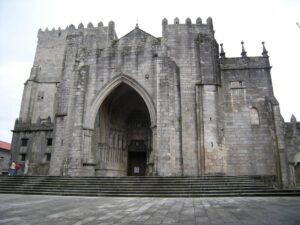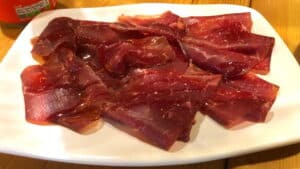
The Portuguese Coastal Way is much more than just a route to Santiago: it is a sensory journey that awakens the pilgrim’s soul and the most discerning palate. With each step, the sound of the sea blends with the aromas of fresh fish, freshly cooked seafood, corn bread, and green wine.
If you’ve thought about taking this route, get ready not only for a spiritual experience but also to discover one of the richest gastronomic offerings in the Iberian Peninsula. In this article, you will discover the most typical dishes that await you along this coastal route.
Índice de contenidos
- 1 Gastronomic Heritage of the Portuguese Coastal Way: Tradition Between Nets and Fire
- 2 Gastronomy and Spirituality: The Taste of the Camino de Santiago
- 3 Must-Try Dishes of the Portuguese Coastal Way
- 4 Places of Interest that Combine Heritage and Gastronomy
- 5 Charming Accommodations with a Gastronomic Touch
- 6 Tips for Enjoying the Gastronomy Along the Camino
Gastronomic Heritage of the Portuguese Coastal Way: Tradition Between Nets and Fire
The culinary history of the Portuguese Coastal Way is closely linked to its geography.
This route travels through fishing villages, rural hamlets, and historic towns where culinary traditions have been passed down from generation to generation. Since medieval times, when pilgrims ventured from Porto to Santiago along the Atlantic coastline, taverns and inns offered simple yet comforting dishes.
Along this route, the cuisine revolves around the sea: grilled sardines, cod in all its forms, seafood rice dishes, fish stews. It also centres on the land, with products such as broa (corn bread), green wine from the Minho region, and smoked meats from the north.
Many of the dishes we now consider traditional were originally survival foods. Over time, with the growth of the Camino, they have been refined, integrating new techniques, local ingredients, and, above all, a lot of love.
Gastronomy and Spirituality: The Taste of the Camino de Santiago
Pilgrims who opt for an organised Camino de Santiago enjoy a more structured experience, but also the freedom to immerse themselves in the local culture through its dishes. In towns like Viana do Castelo, Caminha, A Guarda, and Baiona, pilgrim menus include delicacies that sum up centuries of history and maritime life.
Comparison with other routes
- On the Ribadeo Santiago Camino, dishes like lacón with grelos, empanadas, and Galician broths are prevalent. Unlike the Portuguese Coastal Way, the cuisine of this route is more focused on inland products, although seafood from the rías is also enjoyed.
- On the Bilbao to Santiago Camino to Santander, dishes like bacalao al pil-pil, marmitako, and various pintxos stand out. While in the Portuguese coast the focus is on cod with cream and seafood rice, here the emphasis is on Basque mountain and coastal cuisine.
- On the Tui to Santiago Camino, dishes like Galician cocido, empanada, and pulpo a feira can be found. Although it shares some products with the coastal stretch, this route offers a more traditional inland Galician experience.
- French Camino: this is the most well-known route and also the most diverse in terms of cuisine. From the piquillo peppers in Navarra to the botillo in El Bierzo or the Galician beef in O Cebreiro, it offers a fusion of Castilian, Leonese, and Galician cuisine.
- English Camino: short but flavourful, it offers specialities like tarta de Santiago, squid from the rías, and fish such as merluza a la gallega. It is a route where proximity to the Atlantic influences every dish.
- Primitive Camino: crossing the Asturian mountains, its cuisine is hearty. Dishes like fabada asturiana, Cabrales cheese, and game meats stand out. A robust cuisine, ideal for physically demanding routes.
Must-Try Dishes of the Portuguese Coastal Way
Along the route, there are dishes that no walker should miss. Here are the most iconic ones:
Bacalhau à Brás and Bacalhau com Natas
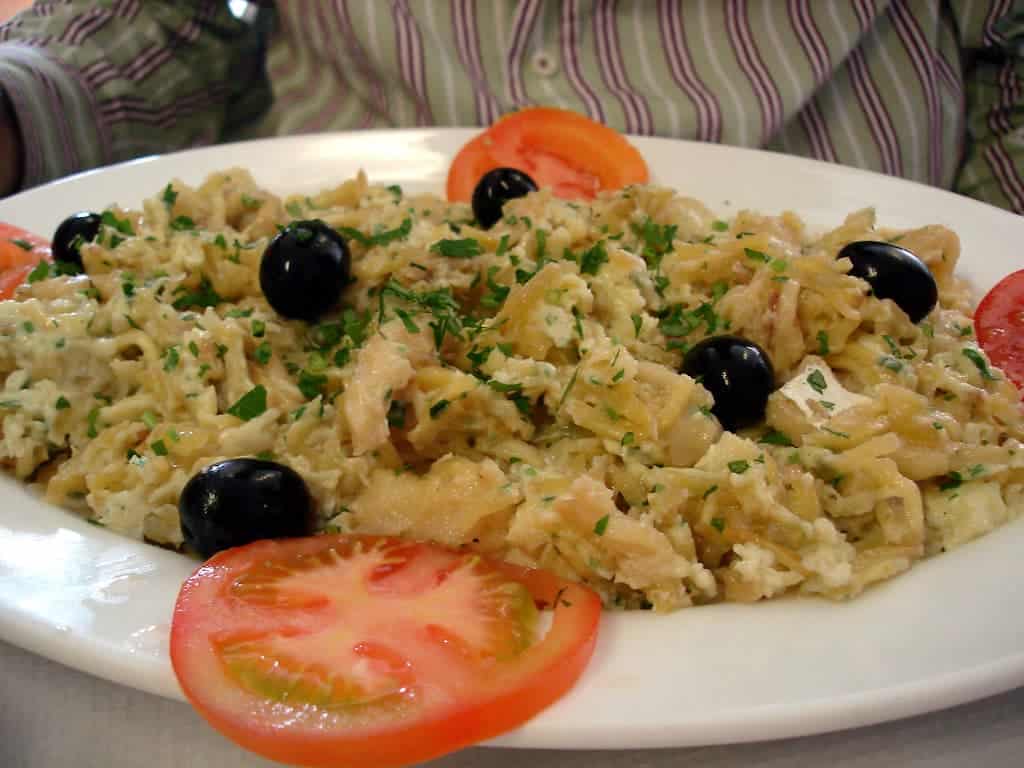
Salted and rehydrated cod is a staple in Portugal. Along the coast, you will find it in creamy versions like bacalhau com natas (with cream) or in traditional recipes like à Brás, with eggs and shredded fried potatoes.
Seafood Rice
This soupy rice dish is packed with seafood such as prawns, clams, mussels, and crabs. It is typically served in earthenware pots and is perfect for replenishing energy after a day’s walk.
Caldeirada de Peixe
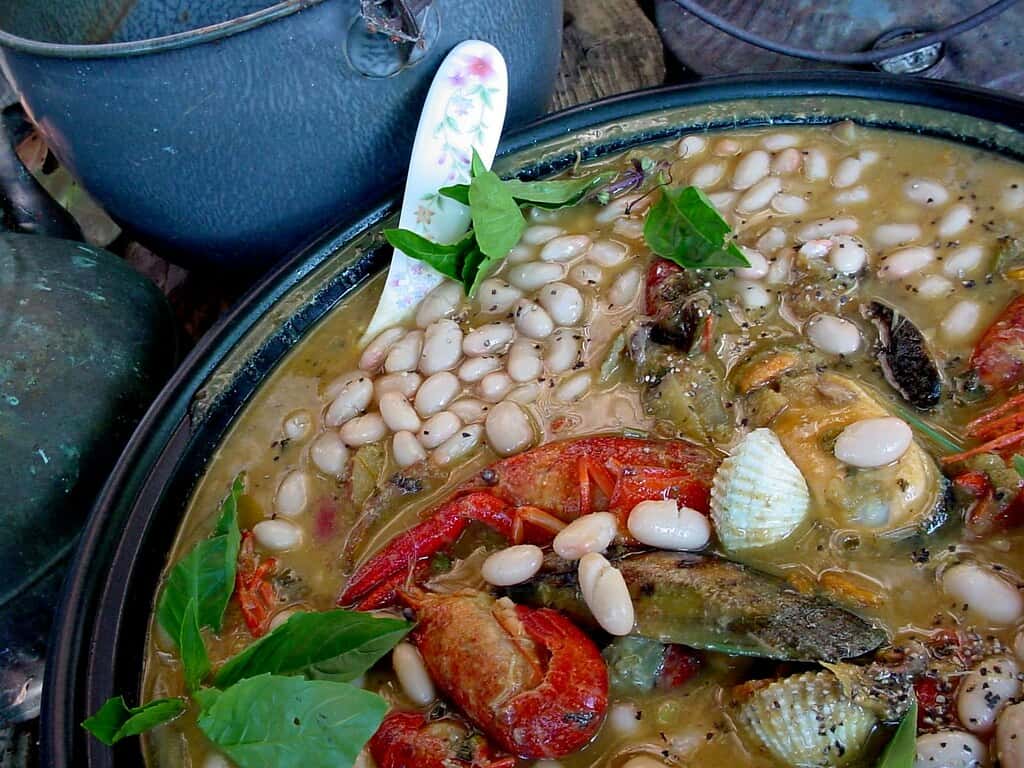
This typical dish is a fish stew with potatoes, onions, peppers, and paprika. The taste of the sea, slow-cooked, encapsulates the essence of Atlantic cuisine.
Grilled Sardines
If you walk the Camino between June and August, you will be lucky enough to experience the local festivals where grilled sardines over hot coals take over the streets and squares.
Zamburiñas and Scallops
In Galicia, zamburiñas (small cousins of the scallop, a symbol of the Camino) are served grilled or gratinated, with garlic and parsley.
Galician-Style Octopus
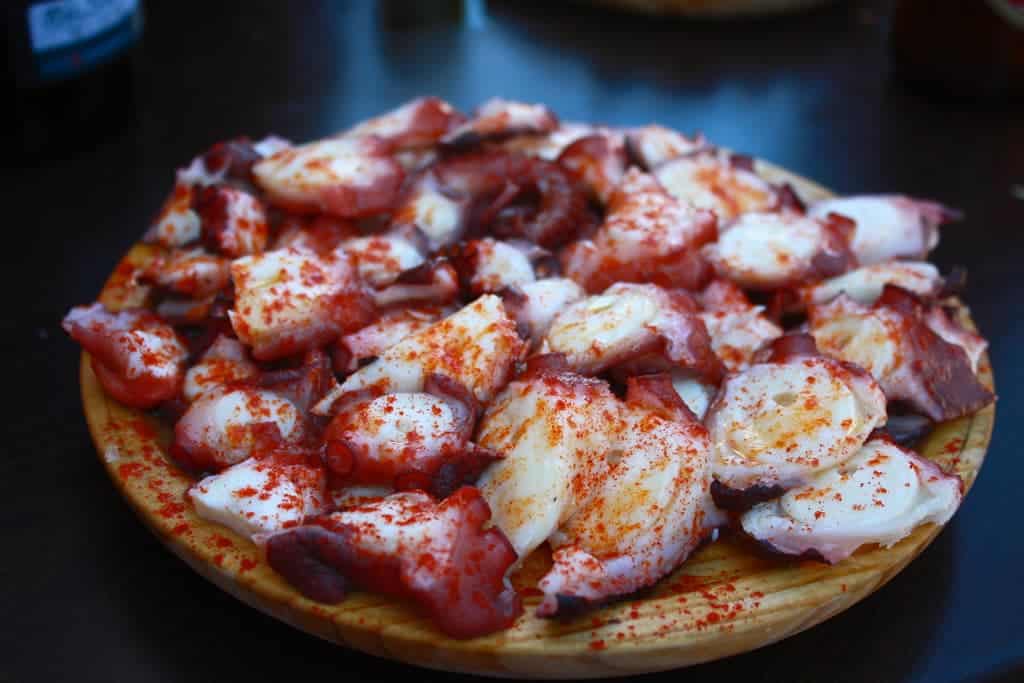
Also known as pulpo á feira, it is one of the most iconic dishes. It is served sliced, with paprika, coarse salt, and olive oil.
Places of Interest that Combine Heritage and Gastronomy
Here are some interesting places where you can enjoy delicious dishes:
Porto: Starting Point and Temple of Wine
The city of Porto is a Baroque gem overlooking the Douro River. Here, not only does the Portuguese Coastal Camino begin, but you can also taste francesinha (a sandwich filled with meat, covered in cheese and smothered in spicy sauce), and visit its famous port wine cellars.
Viana do Castelo: Gothic Art and Fresh Fish
This city, one of the most beautiful in Portugal, combines history, Gothic architecture, and sacred art with the scent of the sea. Don’t miss the rice with monkfish (rape) or the lampreys from the Lima River, in season.
Caminha and A Guarda: The Union of Rivers and Flavours
Caminha, before crossing into Galicia, and A Guarda, already in Spain, are two key stops to try Galician empanadas, fresh seafood, and traditional sweets such as rosquillas (doughnuts).
Baiona: History, Beaches, and Zamburiñas
With its Parador de Monterreal fortress and historic port, Baiona is ideal for a gastronomic break. Here, you can taste seafood, empanadas, and excellent Albariño wines.
Charming Accommodations with a Gastronomic Touch
Along the Portuguese Coastal Camino, accommodation is not just a place to rest. Many hostels, inns, and rural hotels offer culinary experiences that are worth the visit.
- Quintas and Rural Houses: they often offer homemade dinners with local products, perfect for getting to know the cuisine in an intimate way.
- Pilgrim Hostels with Kitchens: they allow travellers to prepare their own meals, but also to share recipes with pilgrims from other cultures.
- Paradores and Hotels with Restaurants: in towns like Baiona, Viana, or Vigo, you can treat yourself to tasting menus that fuse tradition and modernity.
Tips for Enjoying the Gastronomy Along the Camino
- Have a good, but light breakfast: bread with cheese, fruit, or a coffee with pastel de nata. Remember, you’ll be walking for hours.
- Make the most of the Pilgrim Menus: affordable and generous, they include a starter, main dish, drink, and dessert.
- Don’t rush through meals: a relaxing meal on a terrace can be part of the much-needed rest.
- Ask the Locals: the best restaurants don’t always appear online. Trust the advice of locals.
- Try Something New at Each Stage: even if you love octopus, don’t limit yourself. You might discover a stew you’ll never forget.
- Stay Hydrated with Broths and Fresh Juices: in addition to water, many bars offer fresh juices and broths that help replenish salts.
- Buy Artisan Products: cheeses, sweets, jams… ideal as souvenirs or for an impromptu picnic.
The Portuguese Coastal Camino is a complete experience: spiritual, physical, cultural, and of course, gastronomic. Each stage is an invitation to stop, savour, and give thanks. Because on this Camino, you don’t just move forward with your feet, but also with your heart and your stomach.
The recipes you’ll find aren’t in any gourmet cookbook, but they’ve been nourishing the souls of pilgrims for centuries.

